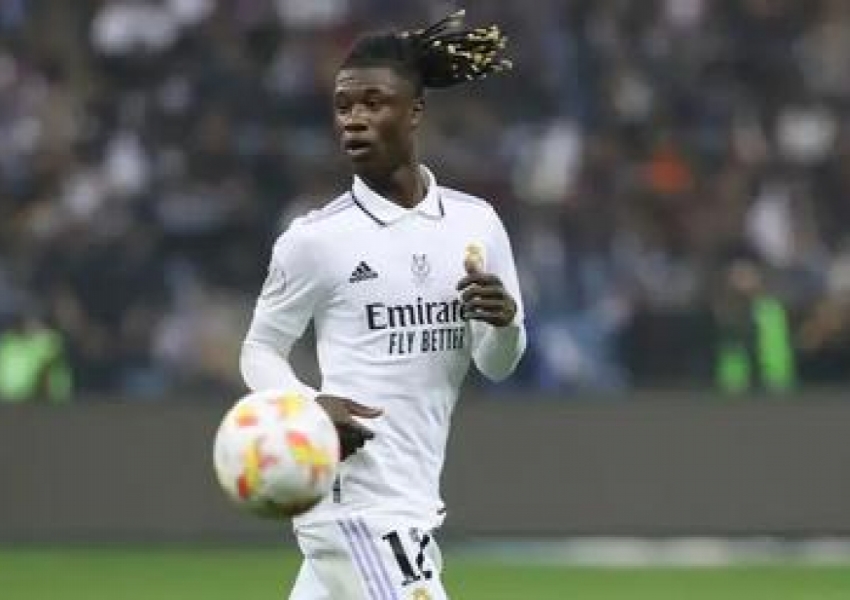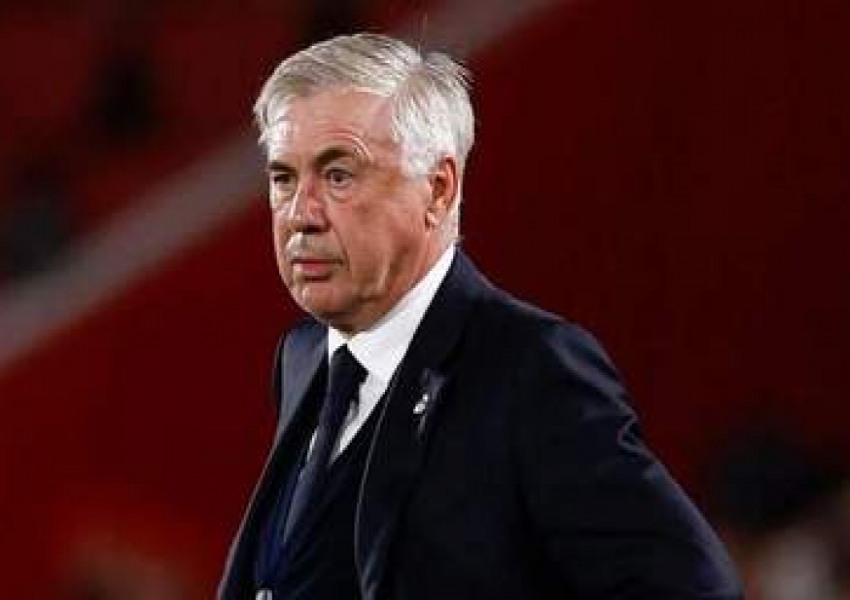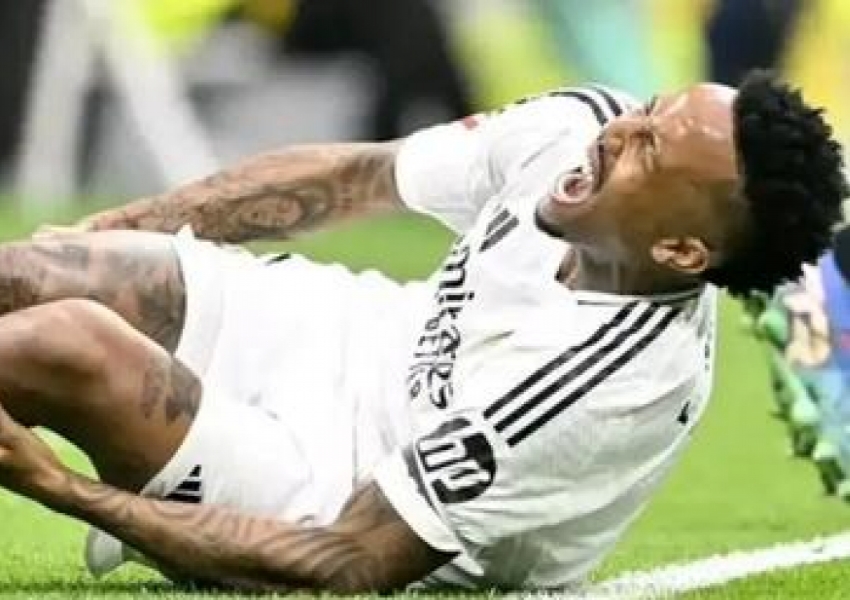Real Madrid’s Defensive Woes Persist: Ancelotti Struggles with Injuries and 13 Makeshift Backlines
Real Madrid closed out 2024 with a hard-fought 4-2 victory over Sevilla, leapfrogging Barcelona to move within a single point of La Liga leaders Atlético Madrid. Despite the positive result, Marca highlighted on December 25 that head coach Carlo Ancelotti remains troubled by an ongoing crisis in defense. The match against Sevilla showcased a peculiar backline, emblematic of the patchwork solutions Ancelotti has been forced to employ throughout the season.

The defensive quartet for the Sevilla game included Eduardo Camavinga at left-back, Antonio Rüdiger and Aurélien Tchouaméni as center-backs, and Lucas Vázquez at right-back. Of the four, only Rüdiger is a natural defender. Camavinga and Tchouaméni are midfielders by trade, while Vázquez, once a winger, has been converted into a full-time right-back.

This isn’t the first time Ancelotti has resorted to an improvised defense. Last season, in a 3-2 victory over Barcelona at the Santiago Bernabéu, he fielded a similar backline featuring Vázquez, Rüdiger, Tchouaméni, and Camavinga. While the setup worked on both occasions, the risks involved were significant.

Injury Crisis Forces Constant Adjustments
Real Madrid’s defensive instability stems from a string of injuries to key players. David Alaba, Éder Militão, and Dani Carvajal—three pillars of the backline—have been sidelined for extended periods, leaving Ancelotti with limited options. According to Marca, Real Madrid has deployed 13 different defensive combinations this season, with the lineup against Sevilla being one of the riskiest: three out of four defenders were playing out of position.
Camavinga’s role as a makeshift left-back has drawn particular attention. Despite having natural left-backs Ferland Mendy and Fran García available on the bench, Ancelotti opted for the French midfielder, valuing his athleticism and versatility. However, Camavinga has publicly stated his preference for playing in midfield, a sentiment echoed by Tchouaméni, who is also more comfortable in a holding midfield role.
On the right flank, Ancelotti had no choice but to start Vázquez, as injuries and the lack of alternatives left him with limited options. Deploying Federico Valverde as a right-back would have disrupted the midfield structure, forcing Ancelotti to stick with Vázquez despite his defensive shortcomings compared to Carvajal.
Youngsters and Uncertainty
One of the few bright spots in Real Madrid’s defensive struggles has been the emergence of young talent Raúl Asencio. The 20-year-old has shown promise in his limited appearances, even earning starts in critical matches. However, Ancelotti remains cautious about relying on him for high-stakes games, preferring the experience of Tchouaméni as a temporary center-back partner for Rüdiger.
This conservative approach underscores the broader challenges facing Real Madrid. The club’s depth has been tested to its limits, with injuries exposing the vulnerabilities in their defensive setup. While players like Mendy and García are available, their performances have not convinced Ancelotti that they are reliable options for top-tier competition.
Ancelotti’s Most Challenging Period
For Ancelotti, this season represents one of the most challenging periods of his illustrious career. The Italian manager has been forced to “patch up” the defense week after week, often sacrificing balance and cohesion to field a functioning backline.
Lucas Vázquez’s transition to a full-time right-back has been serviceable but far from ideal, especially in high-pressure matches where his defensive limitations are more pronounced. On the left, neither Mendy nor García has delivered performances that inspire confidence, leaving Camavinga to shoulder the burden despite his preference for a midfield role.
The injuries to Alaba, Militão, and Carvajal have disrupted the defensive core, with their absences felt not only in individual quality but also in the overall stability and leadership of the backline.
Looking Ahead
The January transfer window offers little hope for immediate reinforcements, leaving Ancelotti to navigate the remainder of the season with his current squad. However, plans are already in motion for the summer transfer window, with Real Madrid reportedly targeting high-profile signings to address their defensive issues.
Among the names linked to the club are Liverpool’s Trent Alexander-Arnold and Bayern Munich’s Alphonso Davies. Both players would bring world-class quality and versatility to Real Madrid’s backline, addressing the glaring gaps that have plagued the team this season.
For now, Ancelotti must continue to rely on makeshift solutions, hoping that his tactical ingenuity and the resilience of his squad can carry Real Madrid through the remainder of the campaign. With the La Liga title race heating up and the Champions League knockout stages on the horizon, the stakes have never been higher.
As Real Madrid enters 2025, the defensive puzzle remains unsolved, but the team’s determination to compete on all fronts is a testament to their resilience. Whether Ancelotti can steer them to silverware despite these challenges will be one of the defining narratives of the season.
Copyright Statement:
Author: mrfootballer
Source: Mrfootballer
The copyright of this article belongs to the author. Reproduction is not allowed without permission.
Recommended Blog
- €240 Million in a Decade: The Rise of Atalanta as Europe’s New Powerhouse
- Premier League Matchday 17: Man City and Villa Share Late-Game Woes, Palace Boss Finds His Feet
- Inter Milan’s Rising Star May Attract £42 Million Bid from Premier League Giants
- After 37 Days of Injury, Barcelona's No. 10 Ansu Fati Returns! But With No Goals or Assists This Season, Could a Winter Loan Be on the Horizon?
- Coppa Italia: Where Can Juventus Find Passion? Atalanta Inspired by Record-Breaking Winning Streak
- Premier League's Second-to-Last: Chinese Owners Seek Rescue by Turning to Super Agent for January Spending Spree
- Ronaldo Supports, 4-3 Farewell! 42-Year-Old Adriano Cries Like a Baby: AI Synthesized Message from Late Father
- 22-Year-Old Man United Star Shows Heartwarming Gesture: Chasing Down Guardiola, Patting His Chest in Comfort! Guardiola Responds with Humility
- Attack Over Defense! Italian Media Reveals Inter Milan’s Strategy to Defeat Lazio, Targeting Former Arsenal Player and Serie A Assist Leader
- No Dimarco, No Party! Inter Milan’s Flying Wing-Back Tops Serie A and Ranks Sixth in Europe, Just Behind €450 Million Five-Star Players
Hot Blog
- Man City’s 21-Year-Old Star Returns Home as a Hero! Receives $350,000 Mercedes, Gifts It to His Father
- 175 Days on the Sidelines! Barça’s 32-Year-Old Guardian Dreams of a Champions League Comeback
- English Media: Manchester United Will Win Premier League Title in 2028! History Will Repeat Itself, Two Teams Serve as Inspirations
- 4 AM Showdown: Barcelona's Revenge Match! Win = 3-Point Lead Over Real Madrid, Key Players Rested
- 0-2 Double Defeat! China National Team Stuck at 6 Points: No More Direct World Cup Hopes, Two Crucial Matches Ahead
- China National Football Team Drops 13.6 Points, Slips to 94th in FIFA Rankings: Syria Overtakes, New 9-Year Low
- 0-0 Draw! Japan 12 Shots, 2 Missed One-on-Ones: 8 Matches, 20 Points, Group Winner, Saudi Arabia Stuck at 10 Points in 3rd
- 4-1, Double Win Over Brazil! Argentina Celebrates: World Cup Qualification Secured, 4th Team Globally to Qualify
- Real Madrid Got Lazy: 7 Kilometers Less Running in UCL! Two Superstar Spectators While Barça Outruns Them All
- Champions League Classic: Barça’s Midfield Maestro Worshipped by Thousands After 11.5KM Marathon